Introduction
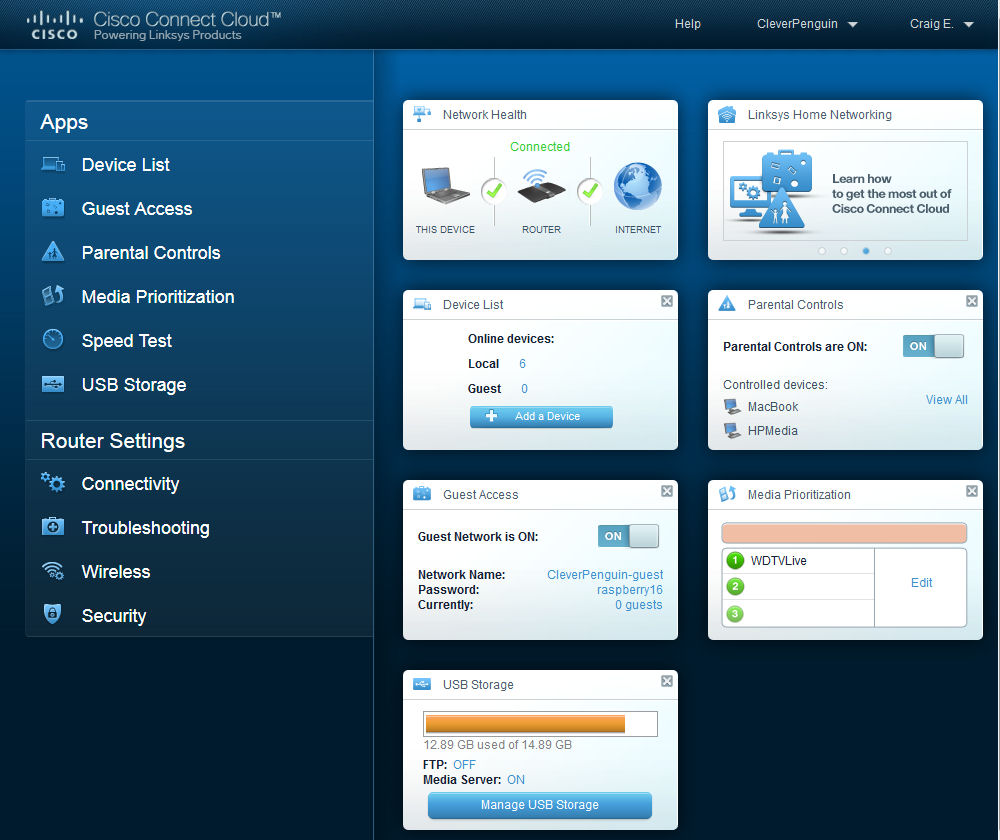
| At a Glance | |
|---|---|
| Product | Cisco Connect Cloud [Website] |
| Summary | Cloud-based platform for Cisco’s Linksys EA series of app-enabled routers. |
| Pros | • New, easy to use Dashboard interface • Android and IOS applications for remote management • Supports third party apps to add and enhance features |
| Cons | • Working internet connection required for full admin feature access • Limited number of third-party apps seem half-baked • Remote USB storage file access via FTP only • No browser admin option for Android devices |
Cisco Connect Cloud (CCC), the new cloud-based software platform for Cisco’s line of Smart Wi-Fi routers, has had a rough start. It immediately came under fire from users who didn’t realize they had authorized Cisco to update their EA-series routers by default. Nothing like logging into your router admin one day and discovering that you had lost the ability to access it unless you signed up for an account with a service you hadn’t heard of! Then things got stickier when folks realized that they had to be connected to the internet to be able to access all router configuration options.
Cisco quickly responded by providing a way to completely opt out of Cisco Cloud and restore traditional non-cloud router configuration and administration. But hard feelings and distrust remain among some current and potential Cisco EA router customers, along with questions about whether cloud-based routers are a good idea at all.
To give Cisco time to recover and provide a more informative review, we purposely waited a few months for the dust to settle and let Cisco get its initial group of apps launched and debugged and perhaps release a few more. So now it’s time to try to answer that last question by looking at what CCC really brings to the table.
In a nutshell, CCC allows you to securely connect to and manage your home network from virtually anywhere using either a web browser or via applications available for both the Android and the ioS platforms. No port forwarding is required and CCC works through multiple layers of NAT, i. e. cascaded routers. In addition, applications from third party developers can extend the features of the platform. (More on that later.)
In developing this article, I used the EA4500 Dual-Band N900 Router with Gigabit and USB – Cisco’s top-of-the-line EA series router. However, this article isn’t a review of the EA4500, but rather the Cisco Connect Cloud platform and features. If you are interested in the speeds and feeds along with a complete review, check out Tim’s review of the E4200V2. From a hardware standpoint, the EA4500 is identical to the E4200V2, so you can expect the performance to be the same.
To help you sort out Cisco’s line or routers, here’s a simple comparison chart (Figure 1) from Cisco’s web site. If you click on this link and select “Compare All Features”, you can view a more comprehensive comparison. For our purposes, the chart shows that “EA” series routers are CCC capable, and “E” series routers are not upgradeable to CCC. The only exception is the E4200v2. The EA4500 is actually a rebranded E4200v2, so the v2 can also be upgraded to CCC.
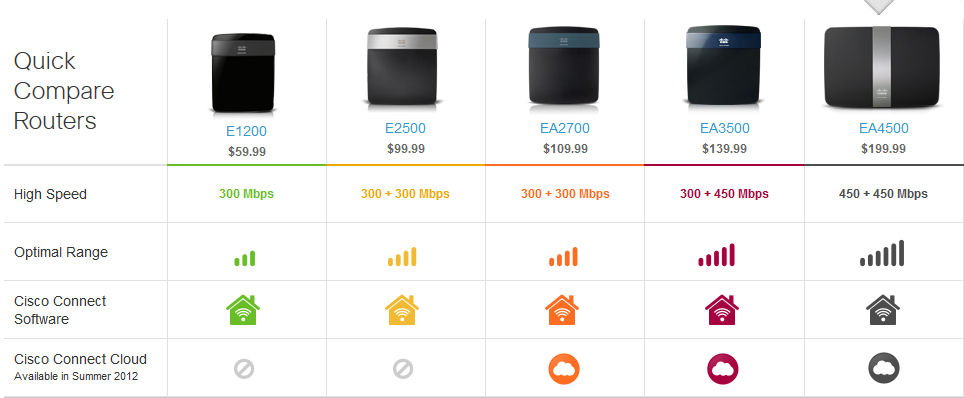
Figure 1: Only the EA series of routers are Cisco Connect Cloud capable
Setup
Setup is accomplished by running the Cisco Connect program provided on a CD that comes with each EA series router and supports MacOS and Windows installs. While Cisco has used Cisco Connect for quite some time, the latest version has been updated to include additional steps required to set up your Cisco Connect cloud account.
The Quick Start guide is a simple three step process that’s printed on the inside cover of the CD Sleeve: 1. Insert CD; 2. Run Setup; 3. Follow on-screen instructions. Figure 2 shows you how to connect your routers. If you click on the orange “Show me how” button, you get more detailed instructions.
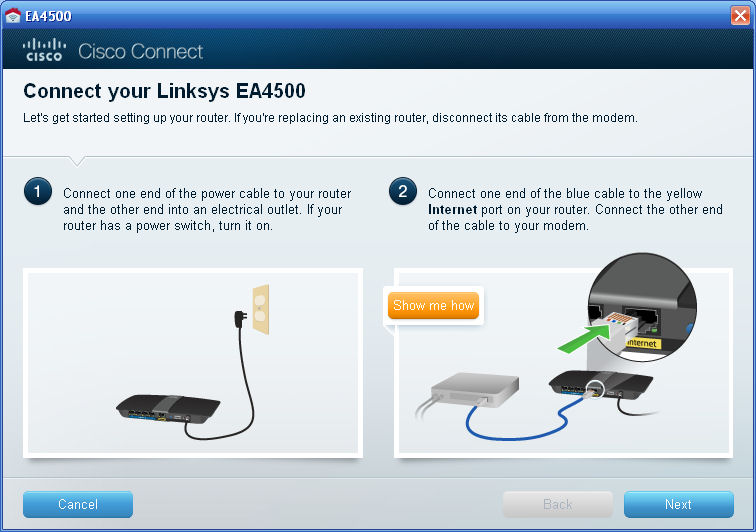
Figure 2: Cisco Connect helps you connect and configure your router
Next, Cisco Connect determines your type of internet connection. If it determines that it requires more information, such as a user name/password for some types of internet connections, you will be prompted. For my connection, it determined that simple DHCP was adequate.
After setting up the internet connection, you set up your wireless network. Your router is pre-configured with an SSID, a wireless password, and a router administration password. You can change any or all of these fields as shown in Figure 3.
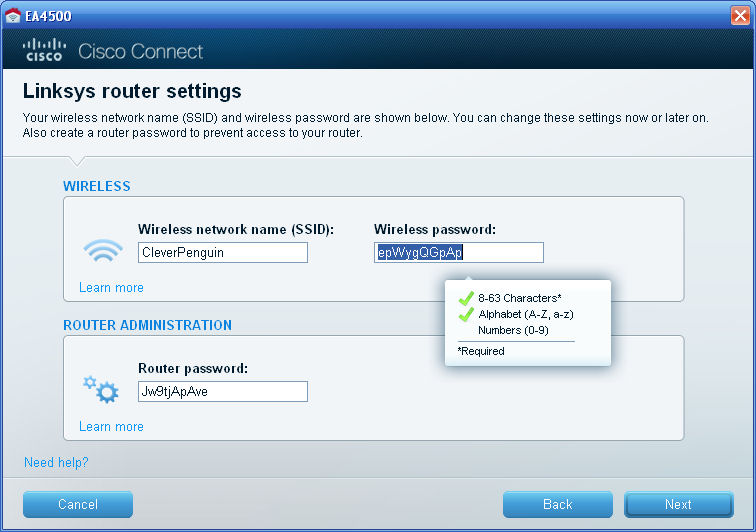
Figure 3: Configuration of wireless settings using Cisco Connect
When the wireless router settings have been completed, the router checks for, and if necessary, installs firmware updates. If all went well, you’ll see a Congratulations screen (Figure 4) that summarizes your router’s settings.
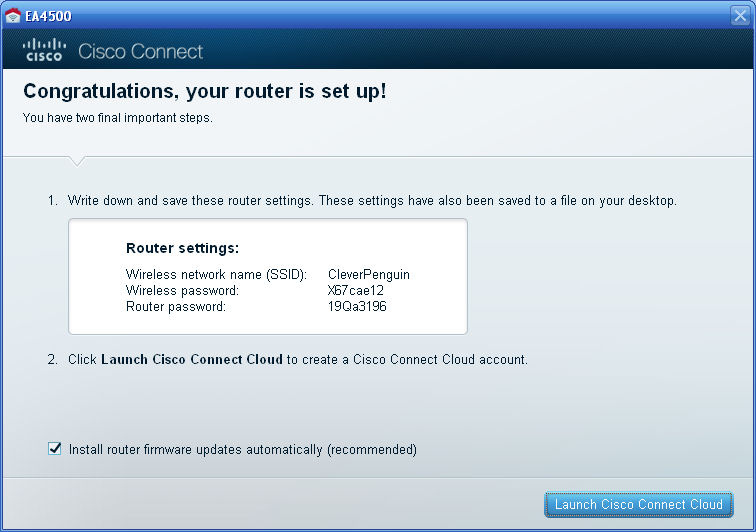
Figure 4: the Congratulations screen summarizes your settings and prompts you to launch Cisco Connect Cloud.
You then click on the “Launch Cisco Connect Cloud” button. This takes you to a web page to create your Cisco Connect Cloud account (Figure 5). You need to create an account to have access to the full features of your router.
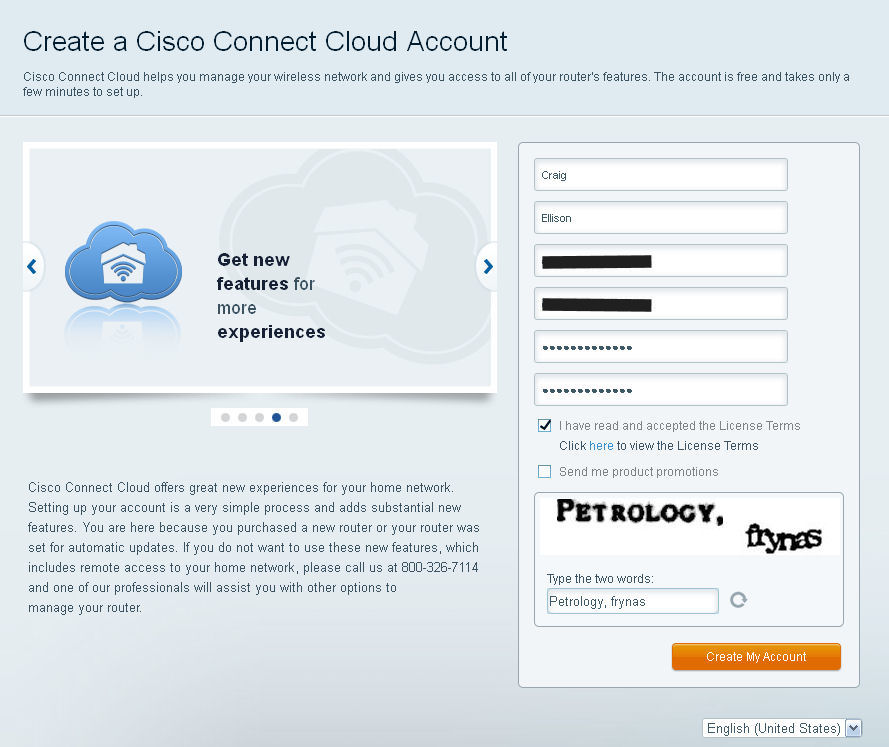
Figure 5: Create your Cisco Connect Cloud account
After clicking on an email validation link your account is activated. You now have one more step to go. On your first login into your CCC account, you will be asked to associate your router with your CCC account by typing in the router administrator password that you previously set up. (Figure 6).
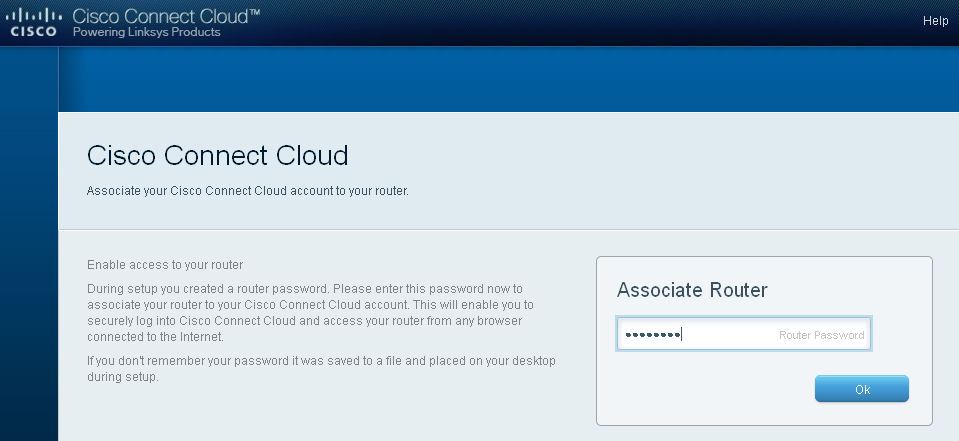
Figure 6: Associate your router with your CCC account by typing in your administrator’s password
The last step of the setup process is to go to www. ciscoconnectcloud. com (or 192. 168. 1. 1) and log in as shown in Figure 7. This takes you to the new CCC dashboard, shown at the top of the review.
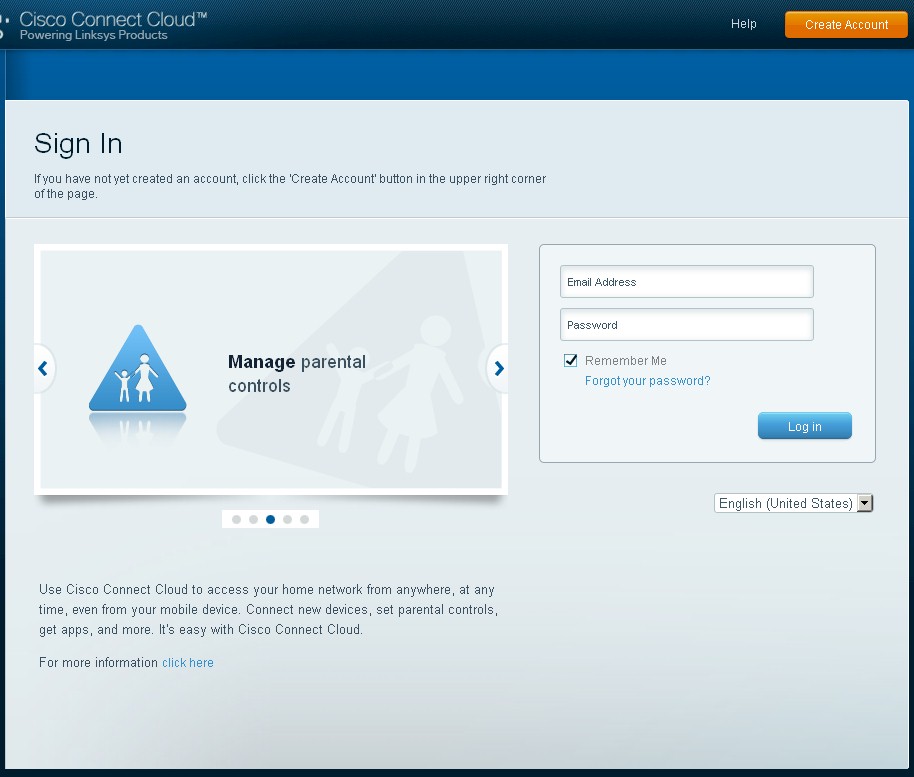
Figure 7: The Sign In page provides complete access to all router functions if you are connected to the internet.
Feature Tour
If you’ve ever logged into a Cisco/Linksys router in the past, the new dashboard interface will be a pleasant surprise. On the right hand side of the screen, you’ll find six widgets that show you the status of your router. On the left side of the screen, you find the six built in Apps arranged at the top, and four top level menu items under Router Settings. Let’s briefly explore each one.
Apps – Device List
This first entry in the Apps group shows a list of all devices connected to your EA series router (Figure 8). If you click on the “i” icon at the bottom of each device box, you’ll see the MAC address, IP address, device name and other information.
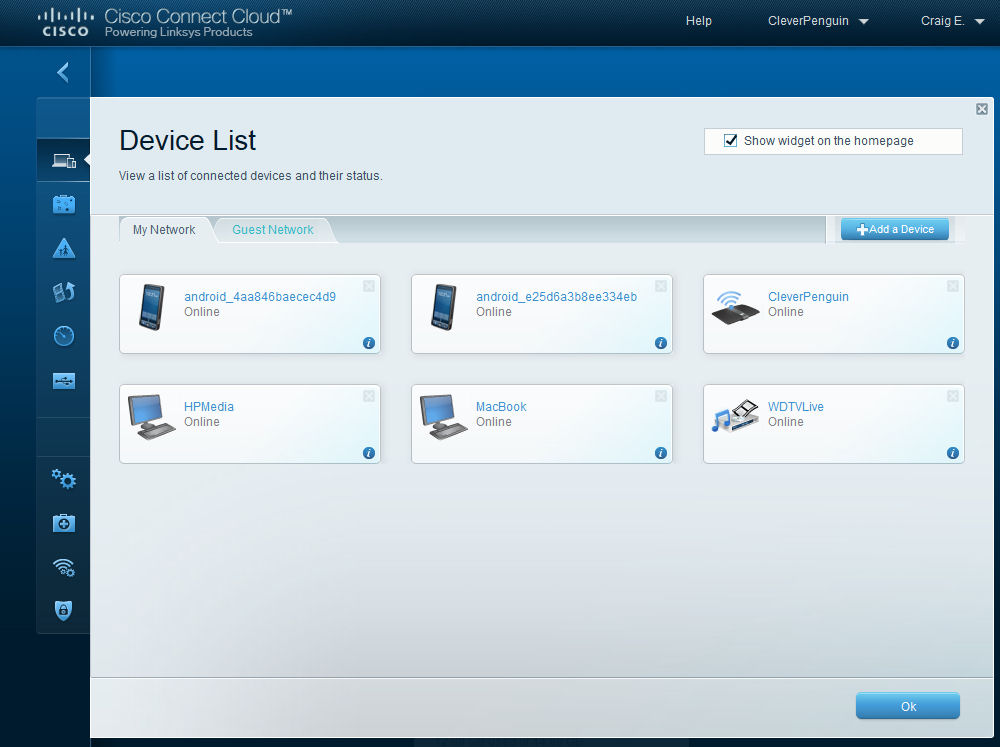
Figure 8: Cisco Connect Cloud device list
From the device menu, you can also add devices to your network as shown in Figure 9.

Figure 9: Adding a device
Figure 10 shows the supported WPS options. There is support for push button, router PIN and Device PIN. One really nice feature is the Push Button. If you click on the Push Button icon, it is the same as walking over to your router and pressing the WPS button on the back. This is a really handy feature if you are in different rooms configuring new wireless devices. For example, using the smart phone CCC app, you can put your router in WPS setup mode while setting up a new laptop.
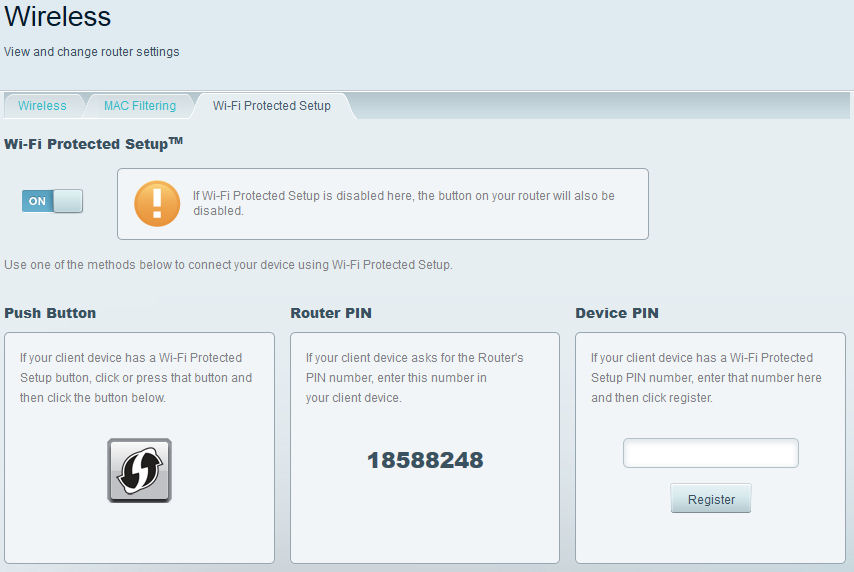
Figure 10: Wi-Fi Protected Setup options
Apps – Guest Access
This menu allows setting up a guest network to allow guests access to the internet. Much like a hotspot, this network is an open network and doesn’t use wireless security. In fact, you can’t enable any level of wireless security on the guest network. However, it is password protected, so your guest won’t have access to the internet unless they type in a password that you provide them. As has been Cisco’s practice, the Guest network is supported only on the 2.4 GHz band.
You can configure the network name, guest password and the total number of guests allowed in increments of five guests up to a total of 50. You can also disable guest access altogether. From a security standpoint, your guests are placed on a separate VLAN (192. 168. 3. 0), so they can’t see or access devices on your wired or wireless network.
Apps – Parental Control
This menu allows you to restrict all internet access for each client on your network (always, never or on a schedule), or to block specific sites. Figure 11 shows each of the clients on my network. With my MacBook highlighted, you can see that it is restricted from going to Amazon. com. I tested restricted sites on different clients, and parental controls do, indeed work. But deny-only website filtering is pretty basic and very limited in practical use. An allow-only option would have been an easy addition and much more useful.
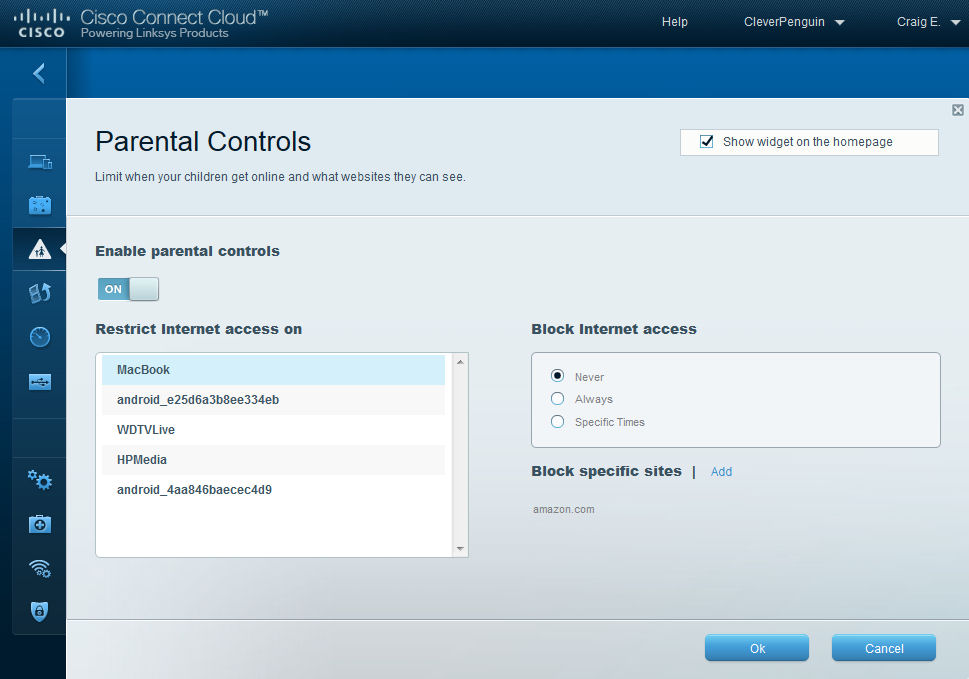
Figure 11: Parental Controls – you can control internet access for each device on your network.
Figure 12 shows that you can control time in one hour increments. Note that the default schedule blocks internet access after 9:00PM on school nights. You can easily change the schedule for each device by clicking on a time box to toggle allowed/blocked times. Again this applies to all internet access. You can’t schedule the "Block specific sites" feature.
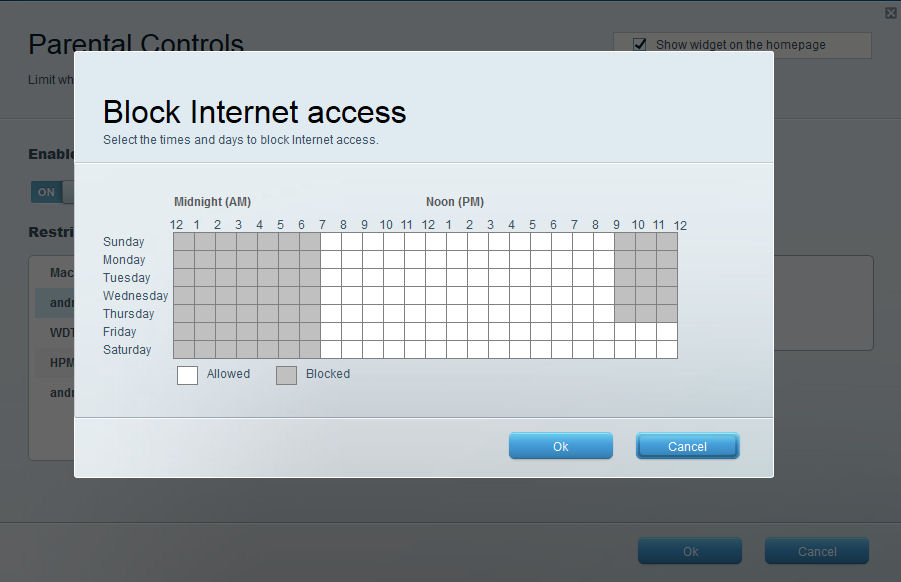
Figure 12: You can allow/block internet access for each device in one hour increments
Apps – Media Prioritization
This allows you configure devices (computers, media players, etc. ), games or applications so that their traffic has internet access priority. Figure 13 shows that I have enabled prioritization, and have given High priority to my WDTVLive media player, as well as Netflix and Skype.
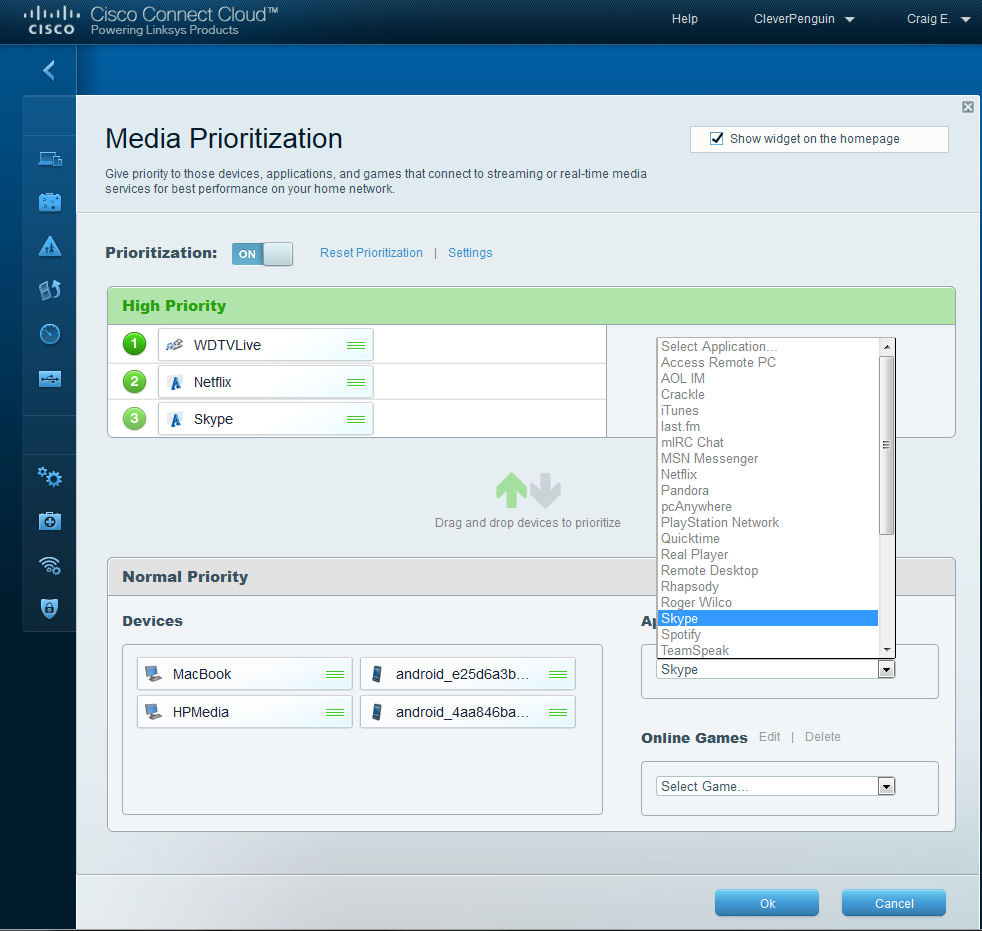
Figure 13: Media Prioritization
You prioritize devices, applications and games by dragging them to the High Priority boxes at the top of the screen. Priority in the High Priority queue is relative and established by the ordering of devices and services. There are only three spots in the High Priority queue, so you are forced to decide what kind of traffic or devices are really most important to you. Three may seem like too small a number. But if you think about it, the small number makes sense.
If you need to add a new application type, you’ll find an "Add a new…" selection at the bottom of each selector. Select it and you’ll get a window where you can name the service and specify the ports and protocol (TCP, UDP, Both).
Apps – Speed Test
This application measures the speed of your internet connection for both uploads and downloads. Figure 14 shows that I’m getting my money’s worth from my ISP, Comcast.
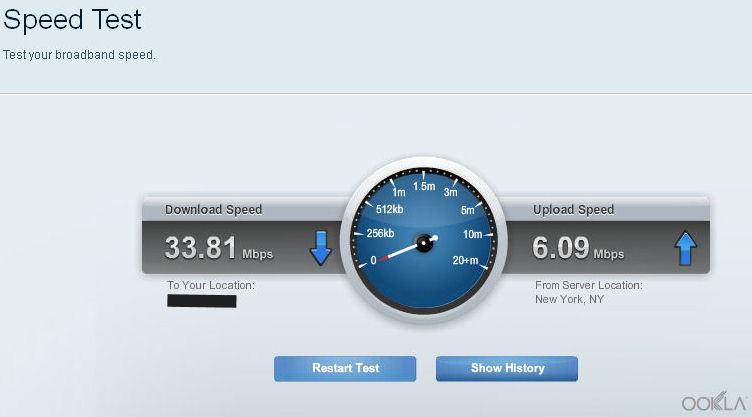
Figure 14: Speed Test application tests your upload and download speeds
Apps – USB Storage
This application provides you with control over the USB storage device plugged into your EA series router (EA3500 and EA4500). Tabs across the top of the interface let you see the status of your storage device, configure users and access rights for folders, enable/disable FTP access, and control your DLNA media server (EA4500).
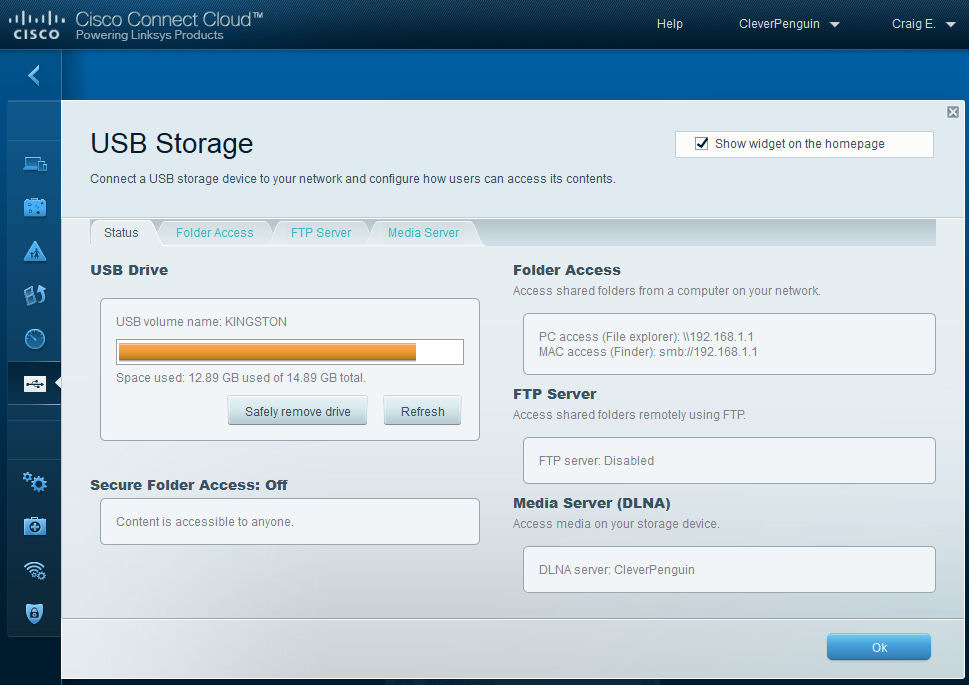
Figure 15: Status of USB storage device attached to your EA router
By default, all files on an attached USB storage device are public with R/W rights for anyone on your network. For computers on the local network, you can map a drive letter (Windows) or mount the device on your Mac using SMB. Unfortunately, for remote clients, your only method of file access is via FTP. Figure 15 shows the USB Storage status page.
Router Settings – Connectivity
Traditional router configuration options are found in the Router Settings group. They are logically grouped under the four top level menus of Connectivity, Troubleshooting, Wireless and Security. Each of the configuration pages uses the same new user interface style that you’ve seen in the screen shots above.
The five tabs shown in Figure 16 control settings related to connectivity. You’ll notice that I renamed my 5 GHz network so that I could easily identify it when connecting my internet-enabled TV. Of special note, under the Local network tab, you can configure DHCP reservation. Under the Administration tab, you can enable local management access via HTTPS as well as wireless. Here, you can also enable/disable remote access for Cisco Connect Cloud and enable the Application Layer Gateway for SIP (VoIP).
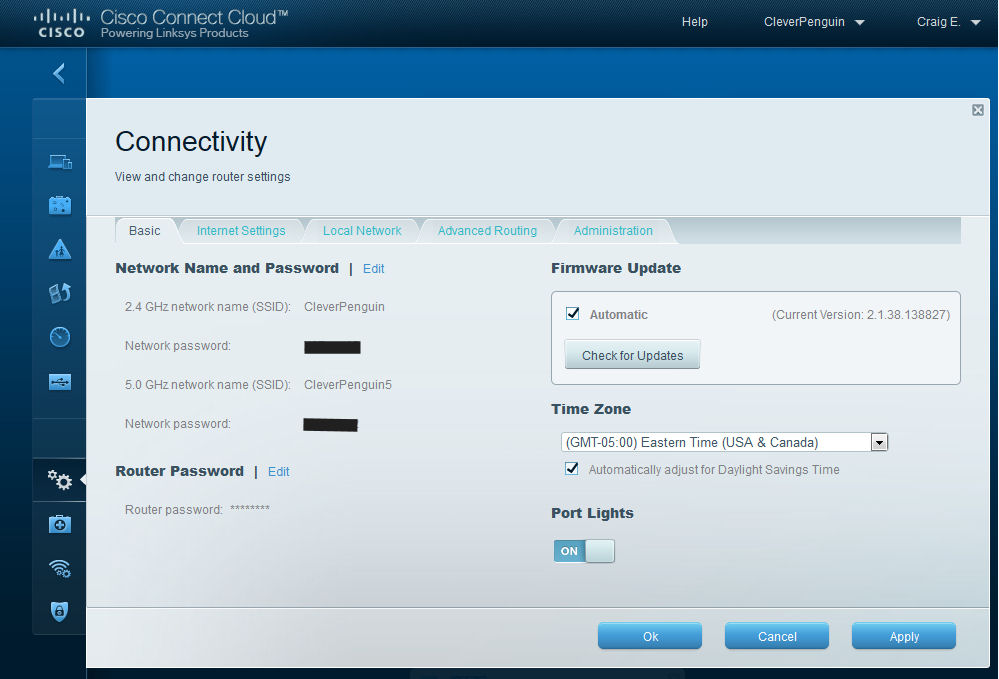
Figure 16: All configurable items related to connections are grouped under the Connectivity menu
Troubleshooting
Here, you’ll find the status (name, MAC address, IP address and connection) of each device attached to your network. You can also view the DHCP reservation table which, in addition to status, shows lease expiration time for each client. Ping, Trace Route and Reboot router are available on a separate tab.
Wireless
All items related to wireless configuration are found on this menu. For dual band routers, you can change each of the following items independently for the 2. 4 GHz and the 5.0 GHz networks: Network (enable/disable); Name (ssid); password; network mode; security mode; channel width; and Channel (assigned or auto). Note that by default, both SSIDs are the same and both radios are set to Auto 20/40 channel width.
There’s a separate tab for MAC address filtering (allow or deny MAC addresses on the list) and a Wi-Fi Protected Setup tab which you saw in Figure 10 above. Interestingly, you can’t disable SSID broadcast, nor can you configure the guest network under this tab. Nor can you enable/disable wireless isolation between wireless clients. There is also no timed access for Wi-Fi.
Security
This tab holds settings for your firewall, DMZ, DDNS (DynDNS and TZO supported), Port Forwarding (single port and port range) as well as Port Range Triggering. Unfortunately, none of the Port Range menus are pre-populated with common applications (such as HTTP on port 80) or common games. Figure 17 shows you the default firewall settings.
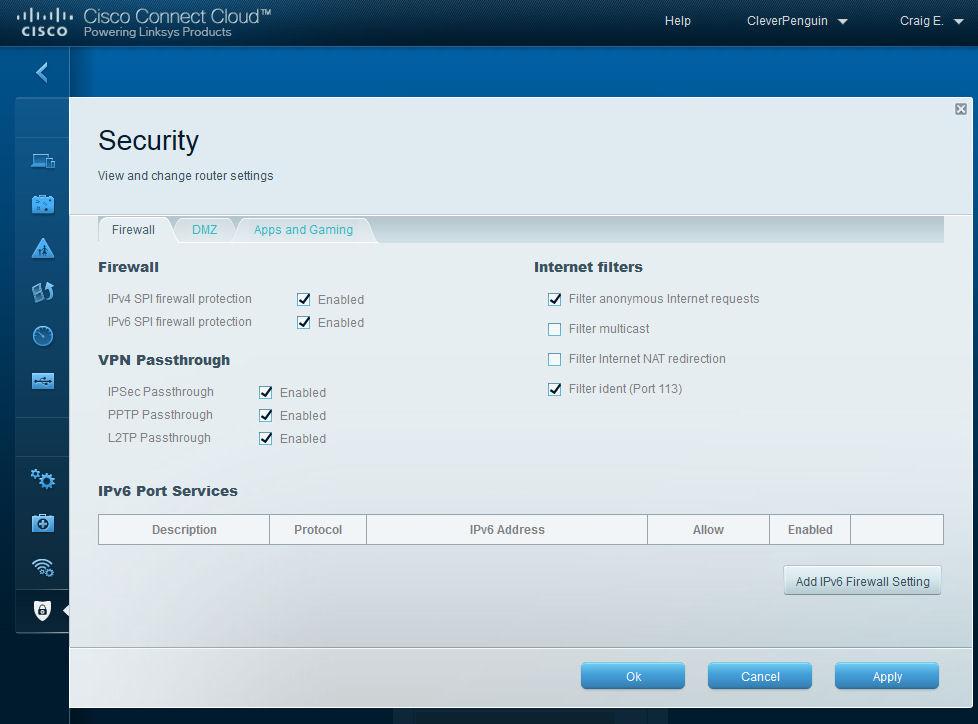
Figure 17: Default firewall settings for the EA4500
Cisco Linksys routers typically don’t let you control user access to internet services (outbound port filtering). CCC follows this scheme for IPv4, but oddly provides outbound port filtering for IPv6 via the IPv6 Port Services control shown in Figure 17.
Hands On
I connected the WAN port of my test EA4500 to a LAN port of my public-facing router. Cisco Connect determined that the “WAN” port was connected to a DHCP server and obtained an IP address from my router. While I had fully expected that I would not encounter any problems establishing internet access, what did surprise me somewhat was that I could log into Cisco Connect Cloud from virtually any network and get connected to the EA4500. It worked flawlessly in a “double NAT” environment. Often, in order for that type of configuration to work, you have to do additional setup with port forwarding and DDNS. The EA4500 just worked.
I tried connecting to it from external networks, from computers on my upstream LAN and from my Droid Maxx. All connected without a problem. It’s worth noting, however, that if you’re not connected to the internet, you’ll only have access to menu items related to connectivity and troubleshooting when you log into the router locally. Check the gallery in Tim’s Opting Out of Cisco Connect Cloud article if you want to see the specifics.
The DLNA server seemed to work quite well. I had about 14 GB of content on a 16 GB flash drive mounted on the EA4500. The WDTVLive recognized the EA4500 as a media server and streamed video, audio and photos without a problem. Similarly, I was able to map a drive letter to the flash drive and mount it on my MacBook desktop.
I found it difficult to test media prioritization, however. I guess the good news/bad news is that I have enough bandwidth (33 Mbps down, 6 Mbps up) that I couldn’t effectively “break” it. I started two NetFlix HD movies to see what would happen. One movie was streaming through my WDTVLive media player and the other was streaming through my desktop. The WDTVLive was set for High Priority and my desktop was set for normal priority. Both were connected to the 2. 4 GHz network on the EA4500. I watched the two streams side by side for the duration of a two hour program (on both) and didn’t see any video dropouts on either.
Additional testing by Tim Higgins
I tested with a 10 Mbps down / 1 Mbps up connection, with two QuickTime 720p trailers streaming from trailers.apple.com to two different machines while downloading a large file via SSH from an internet server to one of the two machines. On multiple attempts with Media Prioritization off, I could only occasionally get a freeze or glitch in one of the video streams.
Cisco says that Media Prioritization also helps on wireless traffic. So I tried a 720p QuickTime trailer stream and downloading a large file via SSH to a laptop connected via a strong three-stream N connection (217 Mbps link rate). Again, with Media Prioritization off, I could not get the video stream to break or even show an occasional glitch.
Based on our experiments, it seems that the Media Prioritization feature will be most useful with connections with more limited download bandwidth, perhaps 5 Mbps and below.
Mobile Apps
Cisco has provided CCC mobile applications for both iOS and Android platforms, allegedly for easier admin access from mobile devices. But Figure 18 shows what happened when I tried to log into www. ciscoconnectcloud. com with my Droid. I ran into the same problem when trying the Android Dolphin browser. Hitting the same site with an iPad’s Safari browser, however, brought up the full admin site.
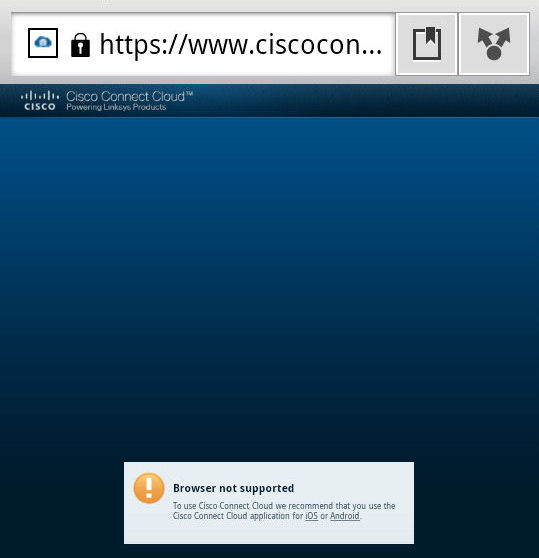
Figure 18: CCC does not support the Android Chrome browser
I thoroughly tested the CCC Android mobile app. It doesn’t allow you the complete control of your EA series router, but you can manage the essentials. You can’t, for example, create/modify a parental control schedule restriction. Nor can you add applications to Media Prioritization – you can only edit devices. Similarly, you can’t control port forwarding or many other settings accessible from the browser interface. These are key features that Cisco is trying to differentiate its "App-Enabled" routers on, so it’s both puzzling and disappointing that they can’t be controlled from apps.
I created an extensive gallery of screen shots on my Droid. Be sure to scroll through them if you’re interested in the user interface.
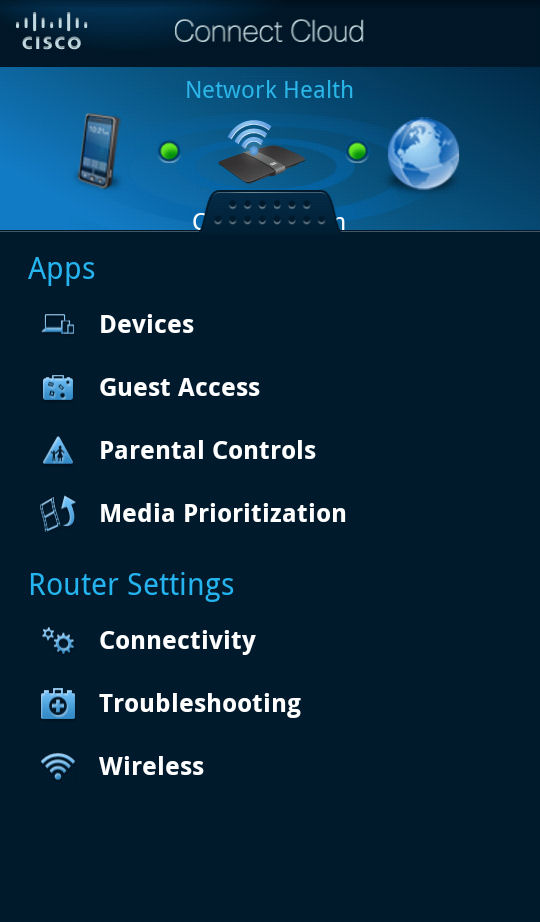
You access this view by tapping on the tab.

This list is one of four scrollable screens shown upon login.
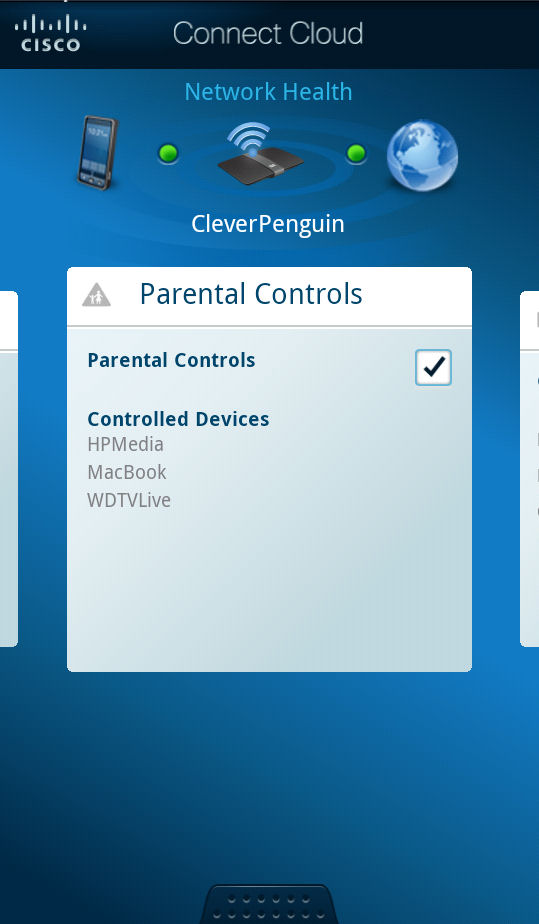
You can enable/disable Parental Control on this menu.
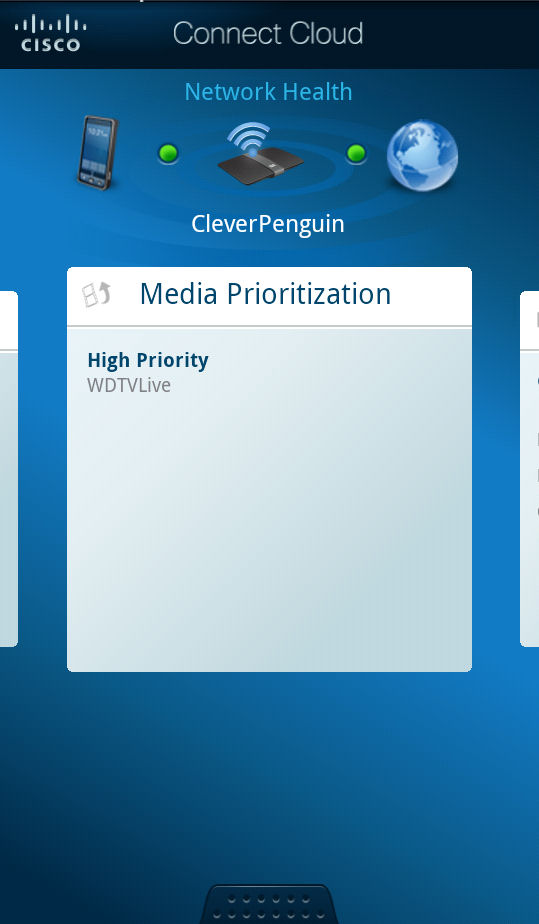
A single device has been selected for Hi Priority.
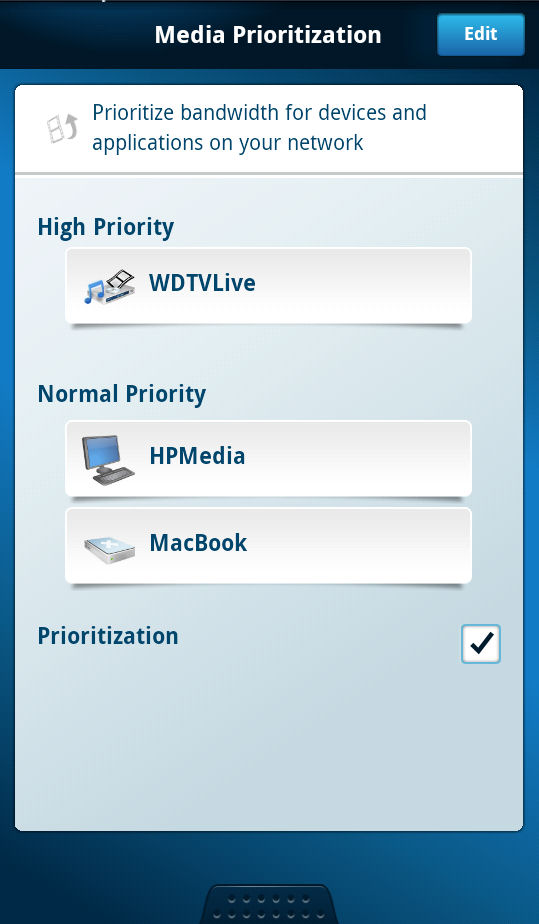
You can add or delete devices to/from the high priority list.
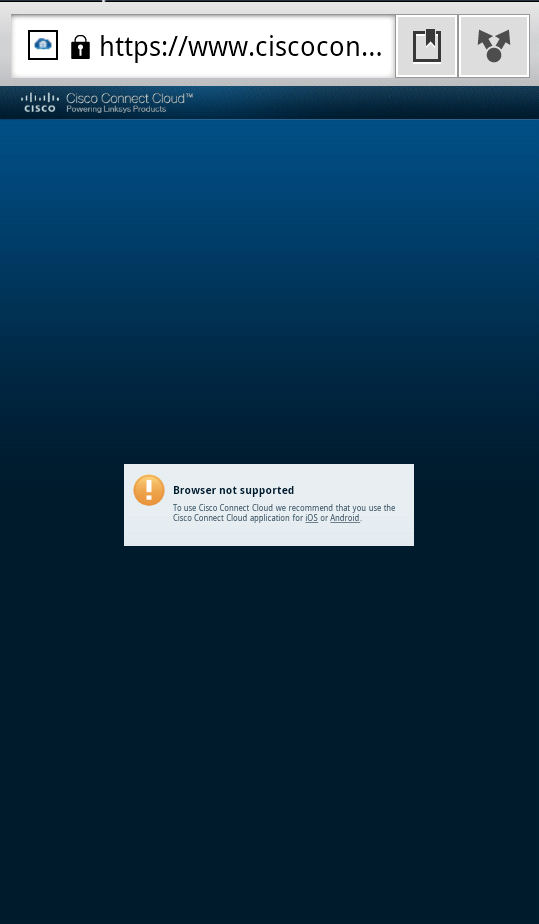
Web browser access on a mobile device is not permitted. You must use the mobile application which only provides a subset of computer browser functionality.
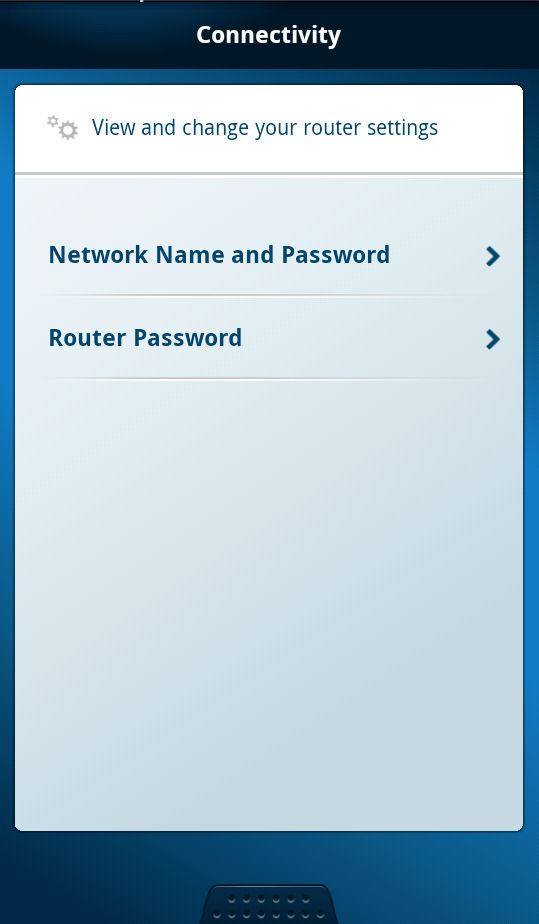
You can change the network name, password and router password
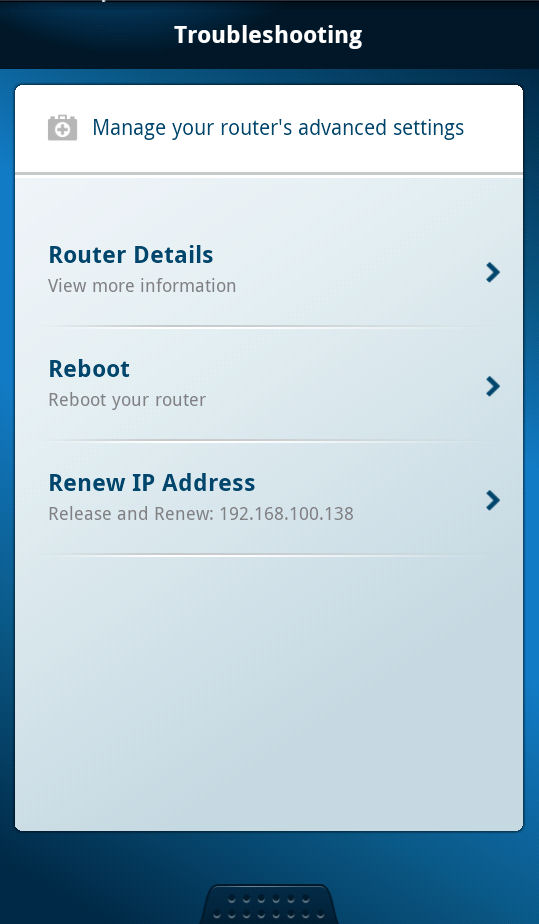
You can view additional router details, reboot the router, or renew the WAN IP address.
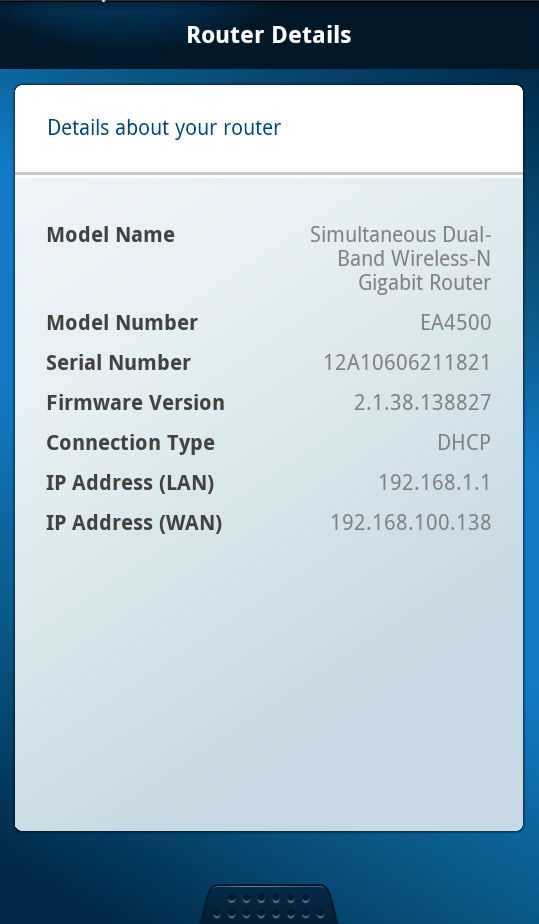
Details about your router from the troubleshooting menu.
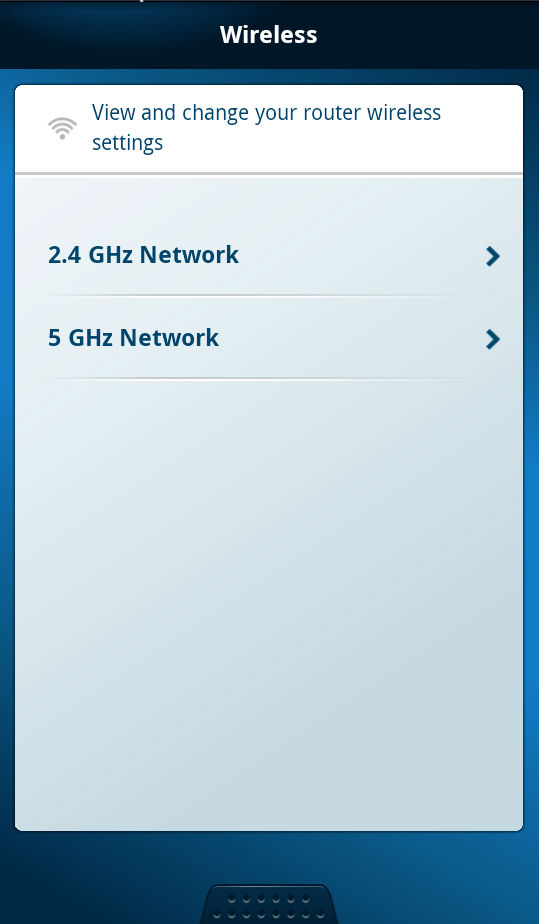
Select either the 2.4GHz or the 5.0GHz network for configuration.
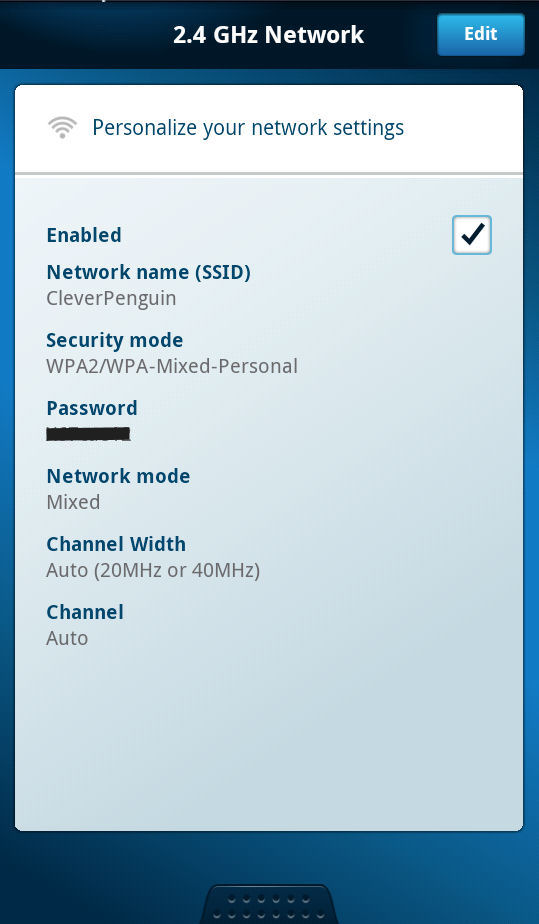
Change any of the wireless settings for the selected network (2.4GHz in this shot).

Netproofer is a graphical interface to control Parental Control. Yellow indicates that some computers are restricted for the corresponding web sites.
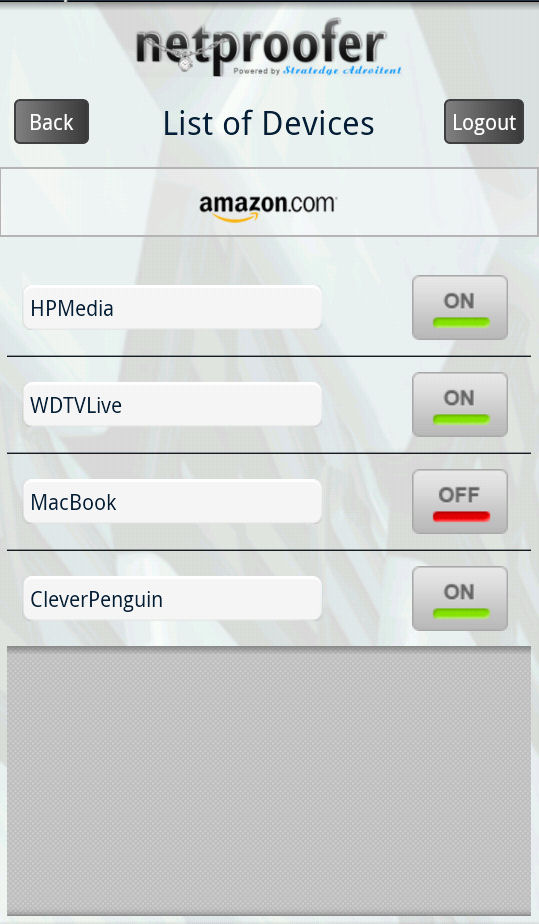
Here, my Macbook is restricted from accessing Amazon.com.
The iOS Cisco Connect Cloud app provides the same functionality as the Android app, providing the ability to manage many, but not all router features. It seems like the same app core is used for both the iPhone/iPad versions, since little use is made of the iPad’s larger screen. On both apps, the home screen has snippets of the adjacent screens along the left and right sides of the screen (Figure 19) to provide a clue that you can swipe left or right to get to additional screens.
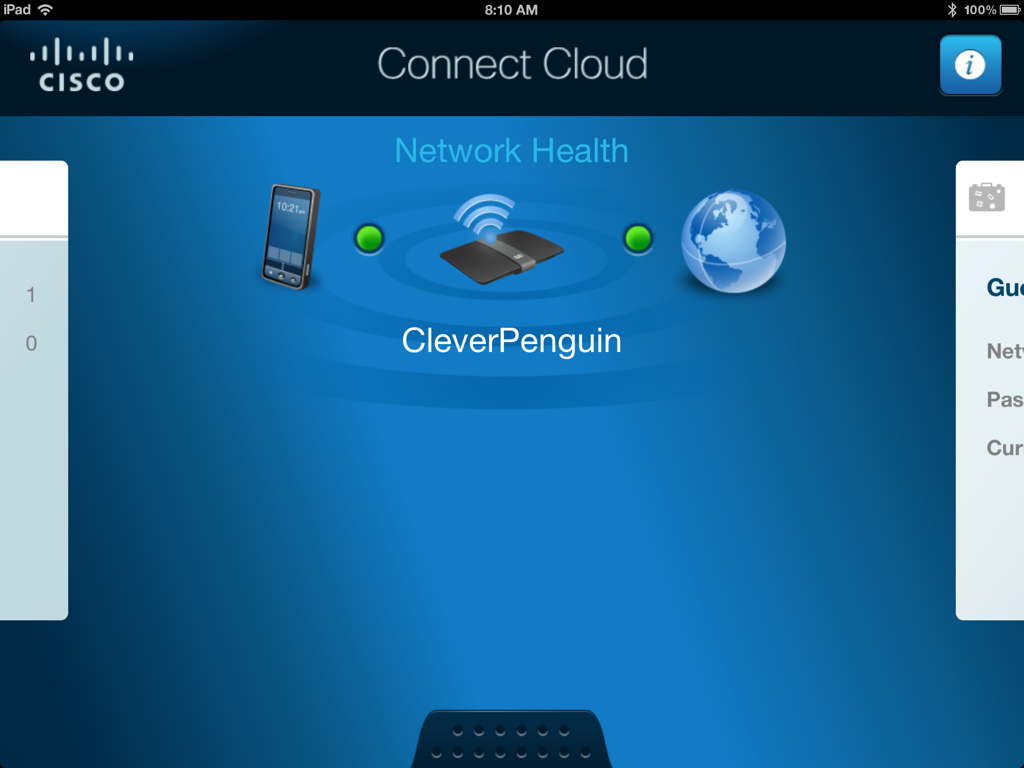
Figure 19: Cisco Connect Cloud landing screen
Third Party Apps
Figure 20 shows the six apps from third-party developers that were announced at the CCC product launch back in April. Of those six, only NetProofer and Twonky Video are available on the Android platform.
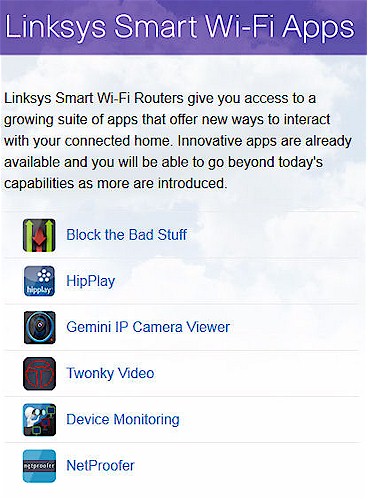
Figure 20: Currently available Apps for EA series routers
I gave most of the apps at least a cursory check out. My experience with each follows.
Block the Bad Stuff
This is a $0.99 app written for the iPhone. It also works on the iPad in both 1X and 2X modes, though you have to turn your screen vertically. This application is a front end for Norton’s free ConnectSafe – a DNS-based web filtering product that provides functions similar to OpenDNS. If you want to save yourself $0.99, you can view setup instructions here.
You have three levels of protection: Security (malware, phishing and scam sites), Security + pornography, or Security + pornography + non-family friendly sites. Depending on the level you choose, you are redirected to a different DNS server. Figure 21 shows the GUI for setting the level and activating the filter.
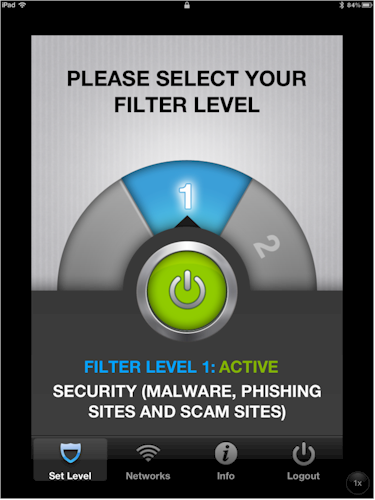
Figure 21: Block the Bad Stuff lets you select the level of protection you want and to activate it.
HipPlay
This is a free media player application from Axentra. Axentra provides multimedia software to many NAS manufacturers. HipPlayer, as shown in Figure 22, can retrieve media from your Dropbox or Facebook accounts or from storage attached to your App-enabled Cisco router. In this example, “CleverPenguin” is a Cisco EA4500 router.
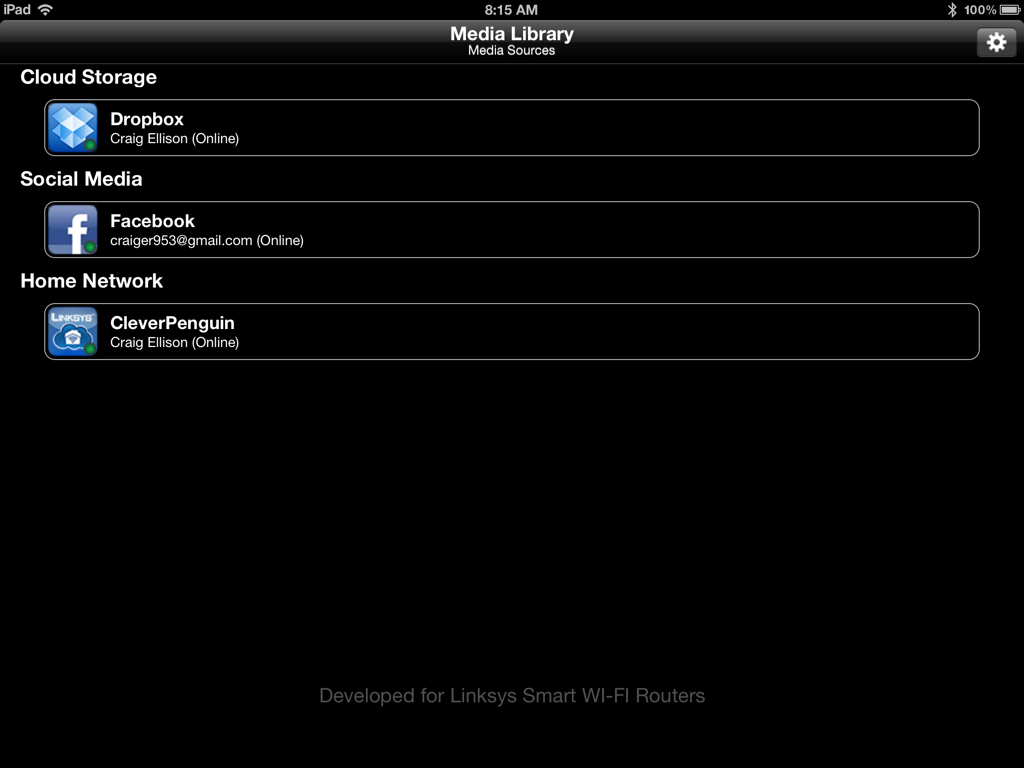
Figure 22: HipPlayer can stream media from multiple sources
Unfortunately, I had multiple issues with HipPlayer.
- When trying to play music from storage attached to the EA4500, HipPlay appeared to take quite awhile to properly enumerate music by artist, genre, all songs, etc. (There are 1227 MP3’s on the attached storage.) After tapping “all tracks” several times, all of the tracks finally appeared.
- As shown in Figure 23, it didn’t find any media when clicking on the icons at the bottom of the screen (All, photos, Music, Videos, Docs).
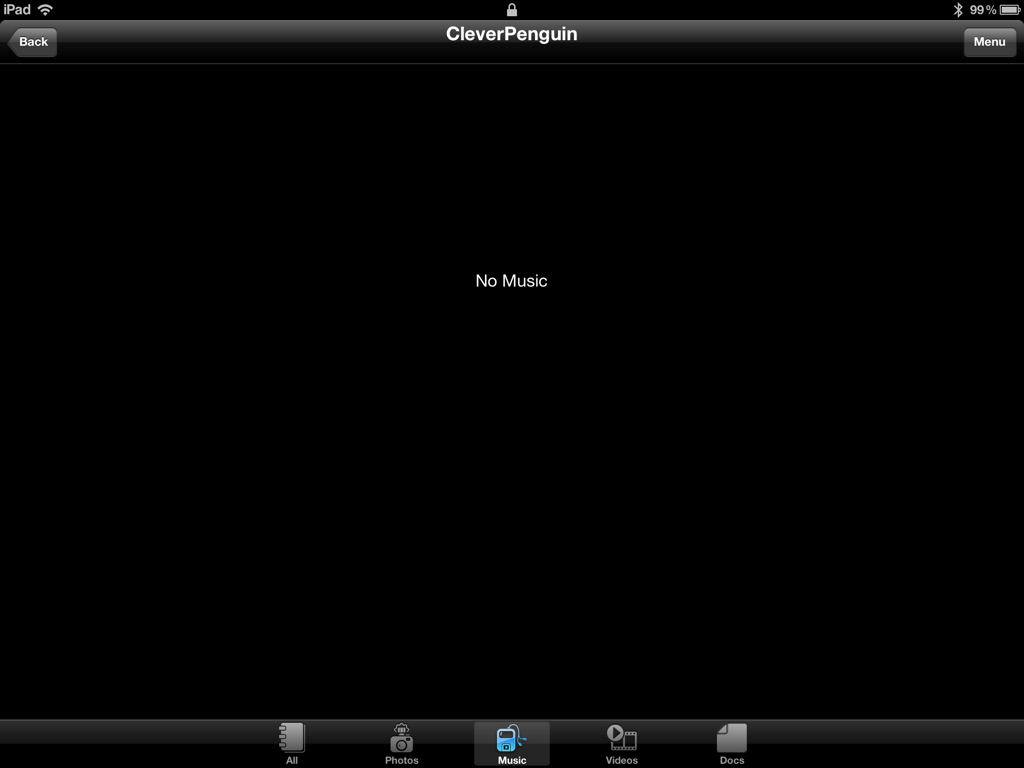
Figure 23: Searching for media using he buttons at the bottom of the screen didn’t appear to work
- When attempting to play MP3 files, the player hung with the rotating “wait” circle.
- Some video formats, such as.avi and.wmv, wouldn’t play even though other iPad players had no problems playing the same file.
Even though it is free, the app was a disappointment, and I’ll probably uninstall it. For now, I’ve settled on 8Player, a $4.99 app. It’s a bit on the pricey side, but it played almost everything (except.m4v files) that I tried to play on the storage attached to the EA4500.
Gemini IP Camera Viewer
This is a $4.99 app that, according to the app store, currently only supports only the Linksys WVC80N and the D-Link DCS-2130 cameras. Since I don’t own either of these and since many cameras have dedicated mobile apps, I didn’t download and test this app.
Twonky Video
Cisco’s Smart Wi-Fi Apps list (Figure 20) shows this app as available only on Android. But the iOS App Store shows Twonky Video, Twonky Beam and Twonky Mobile all available as iPhone apps and Beam as both iPad and iPhone apps. The three apps provide somewhat overlapping features and all three worked on a test iPad.
Video doesn’t appear to support playing content from the EA router, instead providing access to only pre-selected internet-based Channels. Mobile can connect to the EA (and any other DLNA server) and either play the content on the iPad or beam it to an AppleTV or players like Logitech’s Squeezebox (for audio).
Beam (Figure 24) looks like the best bet since it provides access to Video’s internet-based content.
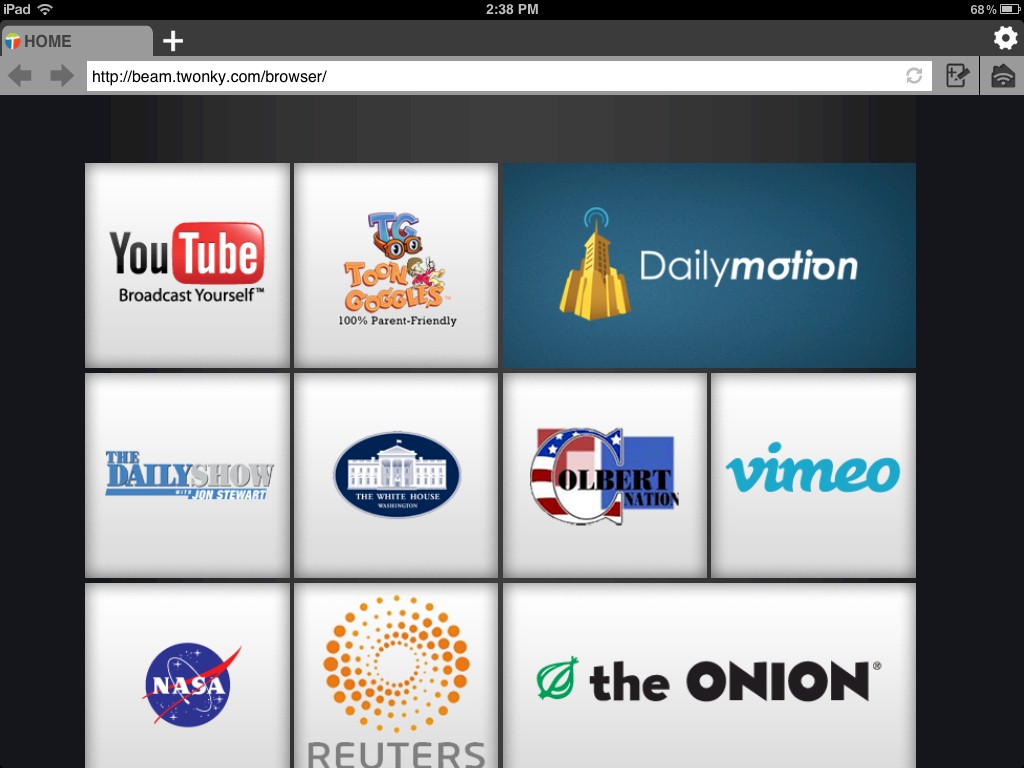
Figure 24: Twonky Beam on iPad
You can also attach to the EA or any other DLNA server to play or beam content (Figure 25).
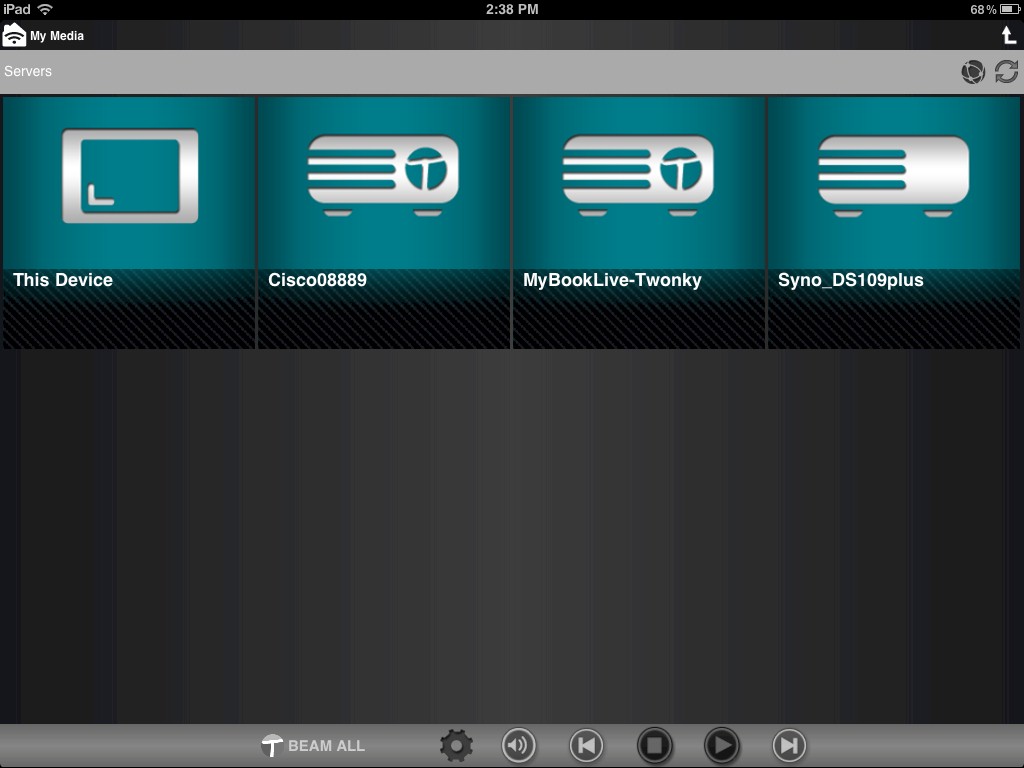
Figure 25: Twonky Beam DLNA server selection
Device Monitoring
The app doesn’t appear in the app store searching for either Cisco Connect Cloud or by its stated name. Cisco advised that Apple was requesting different name so check back at http://home.cisco.com. The application is slated to be available "soon" with a different name.
netproofer
Like the Android version, this $0.99 app provides a simple interface for setting parental controls on Cisco App-Enabled routers. However, after installing it, it gave me an error message as shown in Figure 26. I tried to connect multiple times over the course of two days. Reviewers in the Apple app store also noted this problem.
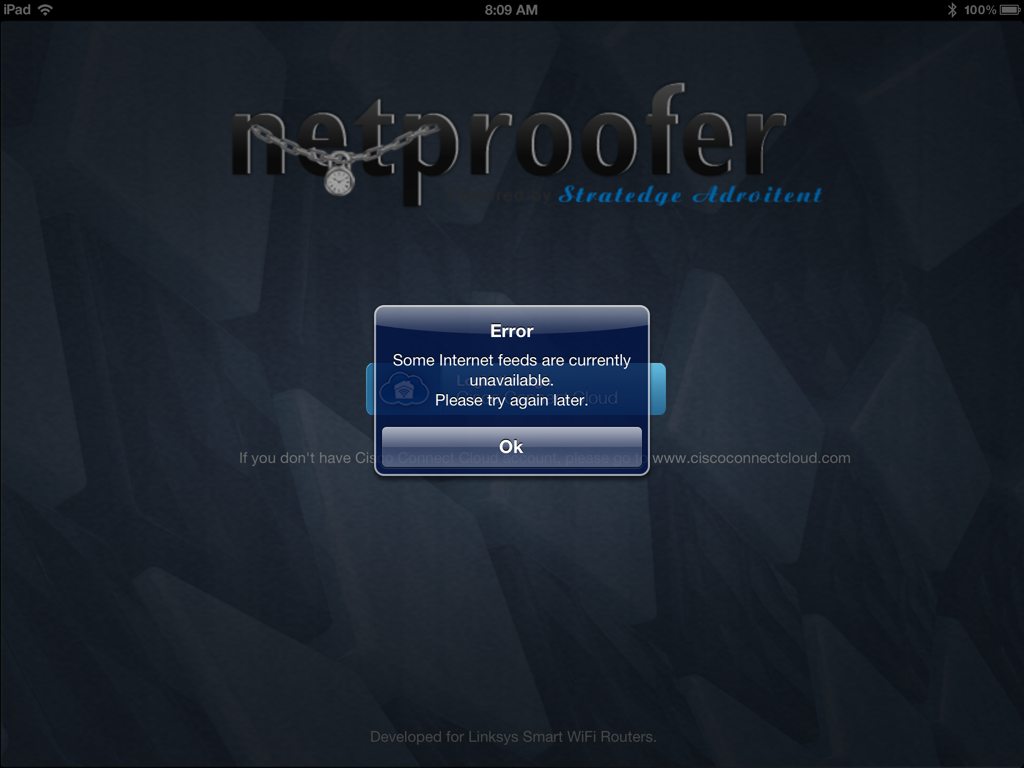
Figure 26: Error message encountered when logging into netproofer through the Cisco Connect Cloud interface
A day later, I tried to connect again and finally was successful. Perhaps there was a server side issue that was resolved. Figure 27 shows the landing screen that you see after logging in via your Cisco Connect Cloud account. From this screen, you can add additional web sites to block.
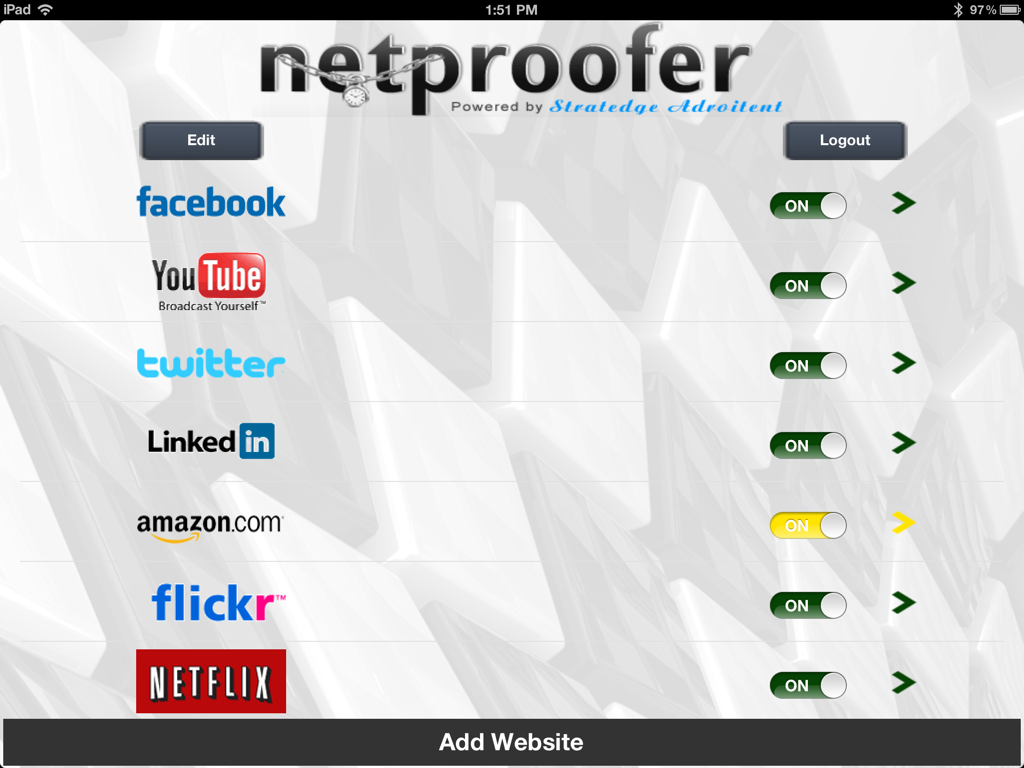
Figure 27: netproofer home screen
If you tap on any of the “>” on the right side of the screen, you are taken to a screen that shows the hosts on your network. (Figure 28). Here, you can decide to block or unblock a host. I blocked Amazon.com for my iPad and then tried to go to the site. Indeed, I was blocked. My complaint is that On/Off is a bit confusing – I would have preferred to see Block/Unblock. Only after I tested, did I discover that Off=Blocked.
Another ding for netproofer is that it doesn’t provide access to the other parental controls function, internet access schedules.
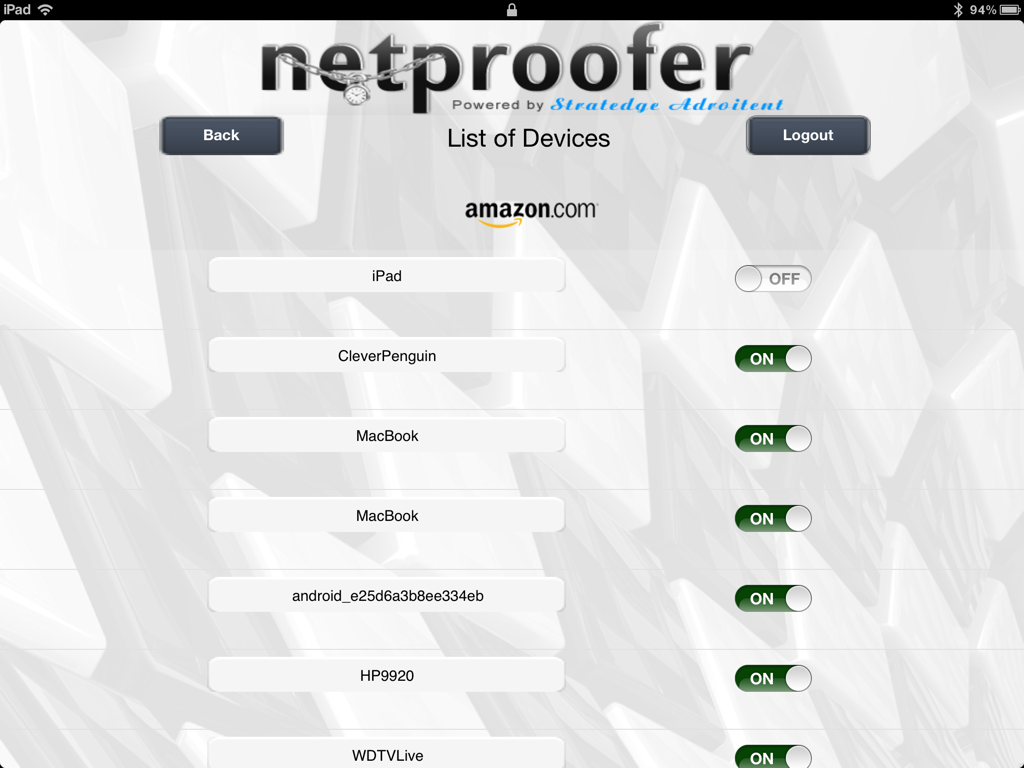
Figure 28: After selecting Amazon.com from the home page, this screen lets you block for specific hosts.
I suppose for 99 cents you shouldn’t expect miracles. But netproofer really provides no functions that you can’t get via the CCC web interface–at least on non-Android devices.
Final Thoughts
Cisco Connect Cloud mostly succeeds at its goal of simplifying setup and administrative access for a consumer router. It enables you to control your network(s) from virtually anywhere. And setup should be easy for even the least tech-savvy user, even those with combination modem/routers forced on them by their ISPs.
For more complex network configurations or remote admin access, there is no need to set up port forwarding or dynamic DNS to make CCC work. Like Skype, it gets through even multiple layers of NAT firewalls so that you can always see what’s up on your network.
Although I liked the simplicity and UI of the CCC apps, I would have preferred to also have the option of access through my Android browser so that I could access all admin features. If this can be done on iOS, it should also be possible on Android. Better yet, both iOS and Android CCC apps should be updated to provide full admin access.
The responsiveness and reliability of CCC’s cloud-based administration also needs to improve. There are multiple complaints of slow response from the admin GUI in the Cisco Home Community Forum. And as I write this, multiple attempts to reach the Troubleshooting admin page are met with only a spinning Waiting box. Many consumers are already wary of depending on a working internet connection to be able to control something whose purpose is to provide that very connection! All they need is a few experiences of connection problems and / or admin page delays and they’ll fall back to the non-CCC firmware or maybe simply return their router.
CCC’s other key feature is that it allows management of any CCC-enabled router that you are given permission to access. All you need to do is add the router to your CCC account, at least that’s the theory. Cisco demoed this feature during its press briefings back in March. But there is currently no way to add routers to a CCC account visible in the CCC interface and I wasn’t able to find any instructions on how to do this in the CCC support page.
The "app-enabled" side of CCC has its own set of problems. The list of six third-party apps hasn’t changed since product introduction in April and the apps themselves are no beauties, as you can see from the walkthroughs above. Of the six apps I looked at, none of them are keepers, free or not. And since CCC provides remote access to your router from virtually anywhere, I was disappointed that the only remote file access provided is via FTP. Perhaps Cisco is leaving HTTPS access to a third party app that some developer will create.
Cisco really needs to raise the level of its game on the apps side or the CCC platform will fail before it can even get started. Cisco already had to back off its CCC-only approach for the EA series and provide a non-CCC admin interface. But buyers opting out of CCC are currently frozen at a March 2012 dated firmware and will remain there until Cisco finishes implementing a "dual-track" firmware process at a yet undetermined date.
In all, Cisco Connect Cloud has had a rough start and shows no sign of becoming the runaway hit that Cisco hopes it will be. CCC might be a nice bonus if you’ve already decided that a Cisco EA router is the one for you based on its features and performance. But Cisco Connect Cloud is certainly not compelling enough to be a primary influence on router selection.
